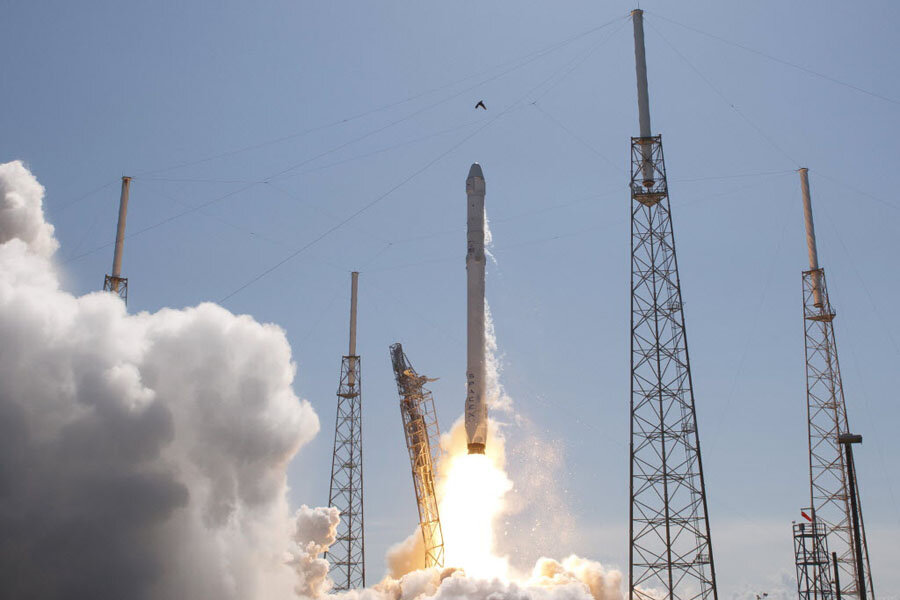SpaceX Dragon capsule launches, but return of booster goes awry
Loading...
A successful-landing party will have to wait, but Space Exploration Technologies Corp. (SpaceX) can celebrate the successful launch of its sixth cargo mission to the International Space Station on Tuesday.
The launch, originally scheduled for late Monday afternoon, was scrubbed about three minutes before liftoff as lightning-laced storm clouds closed in on the launch site at Cape Canaveral Air Force Station on Florida's east coast.
Instead, on Tuesday, SpaceX's Falcon 9 rocket lifted off at 4:10 p.m., Eastern time, and roughly 11 minutes later, the spent second stage released the Dragon cargo capsule on its journey. Dragon is slated to arrive at the space station Friday morning.
"It was a spectacular launch, and everything looks to be on track" for the capsule's arrival Friday morning, said Dan Hartman, NASA's deputy program manager for the space station, during a postlaunch briefing early Tuesday evening.
But SpaceX's attempt to soft-land the Falcon 9's nearly spent first stage on an autonomous barge some 200 miles off of Cape Canaveral failed. The company is trying to perfect the approach as part of its quest to drive down the high cost of launching payloads to space. The goal: to have a fully reusable rocket.
Everything looked good as the booster descended under its own power, said Hans Koenigsmann, SpaceX's vice president for mission assurance. The booster accurately targeted the barge but came down "a little bit too hard," he said.
SpaceX's team will analyze the data to see what went wrong, but Dr. Koenigsmann said he remains optimistic that the team eventually will nail it.
"It's a matter of finding the right parameters. I don't think there's something fundamental" at fault, he said.
Dragon is carrying more than 2.2 tons of cargo to the space station under a $1.6 billion, 12-mission station-resupply contract with the National Aeronautics and Space Administration. A second company, Orbital Sciences Corp., also is under contract for resupply missions. But it is still recovering from a launch explosion last October that destroyed one of its space station-bound rockets and its cargo. It was the company's third out of eight planned resupply missions under a $1.9 billion contract with NASA.
Dragon's cargo includes nearly 1,900 pounds of science experiments and supporting hardware. More than 40 of the experiments are aimed at answering questions about the effects of long-duration stays in space on the human body and on human behavior.
NASA astronaut Scott Kelly and Russian cosmonaut Mikhail Kornienko arrived at the space station on March 27 to begin a year-long stay as test subjects for the experiments. The program also involves Scott's twin brother, Mark Kelly. He's a retired astronaut (and husband of former Rep. Gabrielle Giffords) who will serve as the terrestrial point of comparison for physical changes that Scott undergoes during his year in microgravity.
NASA expects that the results will help inform its plans for sending humans beyond low-Earth orbit and into deep space.








